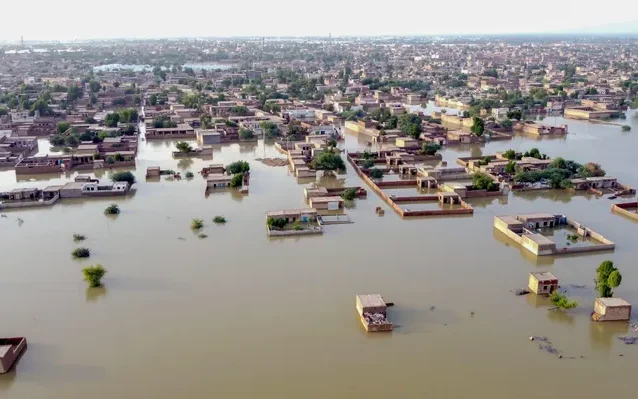Floods in Odisha: Unmasking Odisha’s Battle with Nature
In the coastal state of Odisha, India, the recurring menace of floods has left a lasting impact on the lives of its residents. These natural disasters have not only caused immense damage to property but have also resulted in the loss of human lives. In this comprehensive article, we will delve into the intricacies of floods in Odisha, exploring their causes, effects, and the crucial strategies employed to mitigate their devastating consequences.

Causes of Floods in Odisha
Floods in Odisha, a coastal state in eastern India, are a recurring natural disaster. These floods are typically triggered by a combination of natural and anthropogenic factors. Here are the primary causes of floods in Odisha:
- Monsoon Rainfall: Floods in Orissa are primarily triggered by the annual monsoon season, which typically lasts from June to September. During this period, the state experiences heavy rainfall, leading to the swelling of rivers and an increased risk of floods. The intensity of these monsoons can vary from year to year, making flood management a constant challenge for authorities.
- Topography: Odisha’s topography, with its numerous rivers and extensive coastline, makes it susceptible to flooding. The flat coastal plains and the presence of several major rivers, including the Mahanadi, Brahmani, and Baitarani, create ideal conditions for water accumulation during heavy rainfall.
- Cyclones: Odisha is prone to tropical cyclones originating in the Bay of Bengal, especially during the pre-monsoon and post-monsoon periods. Cyclones bring heavy rains, storm surges, and strong winds, all of which can contribute to severe flooding along the coast.
- Deforestation: The indiscriminate cutting of forests and deforestation in the catchment areas of rivers reduces the natural ability of the land to absorb rainfall. This increases surface runoff, which can lead to rapid river swelling and exacerbate flooding.
- Urbanization and Encroachment: Rapid urbanization, along with encroachments on floodplains and riverbanks, disrupts the natural flow of water. Concrete structures and buildings prevent water from being absorbed into the ground, leading to more surface runoff and flooding in urban areas.
- Siltation: The deposition of silt and sediment in riverbeds and reservoirs over time reduces their capacity to hold water. This can result in rivers overflowing their banks during heavy rainfall.
- Poor Drainage Infrastructure: Inadequate drainage systems and poorly maintained embankments and levees can fail during heavy rainfall, allowing floodwaters to inundate populated areas.
- Climate Change: Changing climate patterns, including increased rainfall variability and the intensity of extreme weather events, can exacerbate flooding in Odisha.
- Land Use Changes: Changes in land use, such as converting wetlands and floodplains into agricultural or industrial areas, can alter natural drainage patterns and increase the risk of flooding.
- Lack of Early Warning Systems: Inadequate or inefficient early warning systems can hinder timely evacuation and preparedness efforts, increasing the impact of floods.
- Poor River Basin Management: Ineffective management of river basins and water resources can lead to uncontrolled water flow during heavy rains.
Floods in Odisha are primarily caused by a combination of natural factors like monsoon rainfall and cyclones, coupled with human activities such as deforestation, urbanization, and poor land use practices. Addressing these factors through improved flood management, urban planning, and environmental conservation is essential to reducing the impact of floods in the region.
The Devastating Impact of Floods
1. Loss of Lives and Property
The most tragic consequence of Orissa’s floods is the loss of human lives. People are often forced to abandon their homes and seek refuge in relief camps, exposing them to health risks. Moreover, the inundation of agricultural land results in crop loss, affecting the livelihoods of thousands of farmers. The damage to infrastructure, including roads and bridges, further compounds the economic impact.
2. Environmental Degradation
Floods also have a significant environmental impact. The sudden inflow of water can lead to soil erosion, damaging the fertile topsoil. Moreover, the pollution of water bodies due to the overflow of sewage and industrial waste poses long-term environmental challenges.
Government Initiatives and Flood Management
1. Early Warning Systems
Recognizing the need for timely information, the government of Orissa has implemented early warning systems. These systems rely on meteorological data and river level monitoring to provide advance notice of potential flooding. Such warnings are crucial in allowing residents to evacuate and take preventive measures.
2. Infrastructure Development
To enhance flood management, the state government has invested in infrastructure development. This includes the construction of embankments, dams, and flood control channels. These structures help regulate water flow and reduce the risk of floods.
3. Afforestation Programs
Afforestation plays a vital role in flood mitigation. Orissa has undertaken extensive afforestation programs to increase green cover. Trees and vegetation help absorb excess rainfall and reduce soil erosion, thereby minimizing flood risks.
Community Engagement and Disaster Preparedness
1. Awareness Campaigns
Educating the local population about flood risks and safety measures is paramount. The government, in collaboration with non-governmental organizations, conducts awareness campaigns to ensure that residents are well-informed and prepared to face flooding situations.
2. Disaster Response Teams
Efficient disaster response teams are crucial during floods. Orissa has trained personnel and volunteers who are ready to provide immediate assistance during emergencies. These teams play a vital role in rescue operations and relief distribution.
In conclusion, floods in Orissa are a recurring challenge that demands both preparedness and proactive measures. The state’s diverse geography, coupled with the annual monsoon season, makes it susceptible to flooding. However, with the implementation of early warning systems, infrastructure development, afforestation programs, and community engagement, Orissa is steadily working towards reducing the impact of floods on its residents. By focusing on these strategies, Orissa is not only mitigating the devastating consequences of floods but also building a resilient community that can face such challenges head-on.






